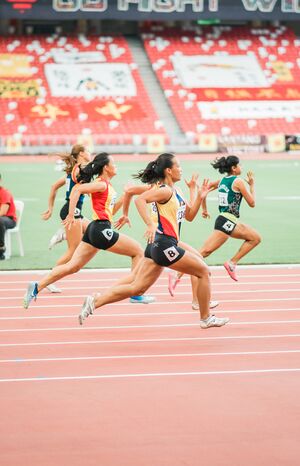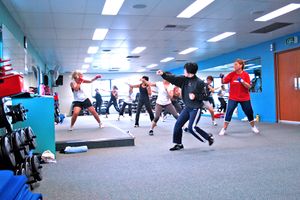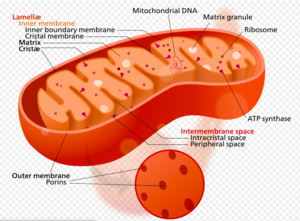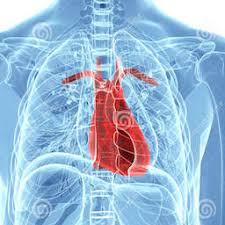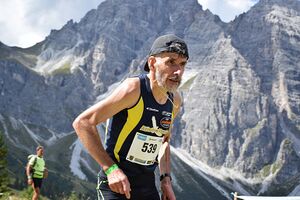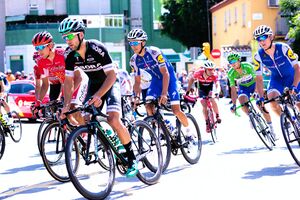Endurance Exercise: Difference between revisions
No edit summary |
Oyemi Sillo (talk | contribs) mNo edit summary |
||
| (11 intermediate revisions by 2 users not shown) | |||
| Line 8: | Line 8: | ||
* Endurance training involves developing both general and event specific endurance. And the mental toughness or “grit” needed to achieve our peak performance.. | * Endurance training involves developing both general and event specific endurance. And the mental toughness or “grit” needed to achieve our peak performance.. | ||
* Endurance training is largely influenced by physiological factors (efficiency of [[ATP|energy]] systems, [[Aerobic Exercise|aerobic]] capacity/VO2 max, lactate threshold, [[muscle strength]], [[Strength Training versus Power Training|power]] and muscular endurance). See also [[Exercise Physiology|exercise physiology]] | * Endurance training is largely influenced by physiological factors (efficiency of [[ATP|energy]] systems, [[Aerobic Exercise|aerobic]] capacity/VO2 max, lactate threshold, [[Muscle Strength Testing|muscle strength]], [[Strength Training versus Power Training|power]] and muscular endurance). V02 max is defined as the maximal volume of oxygen that the body can deliver to the working muscles per minute. See also [[Exercise Physiology|exercise physiology]] | ||
* [[Neuromuscular Adaptations to Exercise]] and Psychology also play a key part in success in endurance sport.<ref>Training for endurance [https://training4endurance.co.uk/physiology-of-endurance/what-is-endurance/ What is endurance?] Available: https://training4endurance.co.uk/physiology-of-endurance/what-is-endurance/<nowiki/>(accessed 25.11.2021)</ref> | * [[Neuromuscular Adaptations to Exercise]] and Psychology also play a key part in success in endurance sport.<ref>Training for endurance [https://training4endurance.co.uk/physiology-of-endurance/what-is-endurance/ What is endurance?] Available: https://training4endurance.co.uk/physiology-of-endurance/what-is-endurance/<nowiki/>(accessed 25.11.2021)</ref> | ||
| Line 16: | Line 16: | ||
# Specific endurance is the ability to stand against [[Muscle Fatigue|fatigue]] in sport specific conditions. The better the sport specific endurance, the better performance at this specific sport. It can be characterised as a combination of various types of endurance needed to maximise the ability to succeed in the discipline. eg, if you’re a 1500m runner, you use a combination of endurance training methods to perform better at your specific distance. | # Specific endurance is the ability to stand against [[Muscle Fatigue|fatigue]] in sport specific conditions. The better the sport specific endurance, the better performance at this specific sport. It can be characterised as a combination of various types of endurance needed to maximise the ability to succeed in the discipline. eg, if you’re a 1500m runner, you use a combination of endurance training methods to perform better at your specific distance. | ||
# General endurance characterises the ability of the whole body to tolerate endurance exercises and diminish fatigue. The better your general endurance the better you can stand longer efforts at various sports disciplines. eg, if you are a 30 km cyclist you have a high level of general endurance, you can perform at a | # General endurance characterises the ability of the whole body to tolerate endurance exercises and diminish fatigue. The better your general endurance the better you can stand longer efforts at various sports disciplines. eg, if you are a 30 km cyclist you have a high level of general endurance, you can perform at a relatively high level also at 100km, but you can’t beat 100 km cyclists who have been developing their distance specific endurance<ref>Blogsportlyzer Types of Endurance Training Explained Available: https://blog.sportlyzer.com/en/types-of-endurance-training-explained/ (accessed 25.11.2021)</ref>. | ||
== New Insights == | == New Insights == | ||
[[File:Cardio Boxing Group Fitness Class.jpg|right|frameless]] | [[File:Cardio Boxing Group Fitness Class.jpg|right|frameless]] | ||
The | The classical view of training specificity is that: individuals who train by exercising for a long time will develop better oxygen delivery to muscle and endurance capacity; those who work against a heavy load will get bigger and stronger muscles. | ||
Recent work using high-intensity interval training (HIIT) to increase endurance and low-load [[Resistance exercises|resistance training]] to failure to increase muscle size and strength have challenged the classical view of training specificity.<ref name=":0">Hughes DC, Ellefsen S, Baar K. [https://www.ncbi.nlm.nih.gov/pmc/articles/PMC5983157/ Adaptations to endurance and strength training.] Cold Spring Harbor perspectives in medicine. 2018 Jun 1;8(6):a029769. Available:https://www.ncbi.nlm.nih.gov/pmc/articles/PMC5983157/ (accessed 25/11/2021)</ref> | |||
* a highly desirable workout, because it engaging all muscle fibers, the fast twitch as well as the slow twitch. This makes anaerobic (HIIT) good for a complete training effect. | HIIT | ||
* The benefits from anaerobic (HIT) exercise depend on the effort put in. Maximum “effort” by a large muscle mass, such as the legs, produces optimum benefits for the whole body. | |||
* Is a highly desirable workout, because it engaging all muscle fibers, the [[Muscle Fibre Types|fast twitch as well as the slow twitch]]. This makes anaerobic (HIIT) good for a complete training effect. | |||
* The benefits from [[Anaerobic Exercise|anaerobic]] (HIT) exercise depend on the effort put in. Maximum “effort” by a large muscle mass, such as the legs, produces optimum benefits for the whole body. | |||
* Typically, a HIIT workout will range from 10 to 30 minutes in duration<ref>Healthline Anaerobic Exercise Available from: https://www.healthline.com/health/fitness-exercise/anaerobic-exercise#types (accessed 25.11.2021)</ref>. | * Typically, a HIIT workout will range from 10 to 30 minutes in duration<ref>Healthline Anaerobic Exercise Available from: https://www.healthline.com/health/fitness-exercise/anaerobic-exercise#types (accessed 25.11.2021)</ref>. | ||
== | == Adaptations in Skeletal Muscle == | ||
[[File:Mitochondria screen shot.png|right|frameless]] | [[File:Mitochondria screen shot.png|right|frameless]] | ||
Endurance training leads to adaptations in both the [[Cardiovascular System|cardiovascular]] and musculoskeletal system that supports an overall increase in exercise capacity and performance. The local adaptations in skeletal muscle, such as increased [[Mitochondria|mitochondrial]] biogenesis and [[Capillaries|capillary]] density, aid in the body’s ability to transport and use oxygen to generate energy and therefore delay the onset of [[Muscle Fatigue|muscle fatigue]] during prolonged aerobic performance. The mitochondrion is the main organelle for energy production through the generation of adenosine triphosphate ([[Adenosine triphosphate (ATP)|ATP]]) via the electron transport system, | Endurance training leads to adaptations in both the [[Cardiovascular System|cardiovascular]] and musculoskeletal system that supports an overall increase in exercise capacity and performance. | ||
The local adaptations in skeletal muscle, such as increased [[Mitochondria|mitochondrial]] biogenesis and [[Capillaries|capillary]] density, aid in the body’s ability to transport and use oxygen to generate energy and therefore delay the onset of [[Muscle Fatigue|muscle fatigue]] during prolonged aerobic performance. The mitochondrion is the main organelle for energy production through the generation of adenosine triphosphate ([[Adenosine triphosphate (ATP)|ATP]]) via the electron transport system.<ref name=":0" /> | |||
== Cardiovascular Adaptations == | |||
[[File:Heart location.jpg|right|frameless]] | |||
Aerobic exercise training leads to [[Cardiovascular System|cardiovascular]] changes that markedly increase aerobic power and lead to improved endurance performance. The functionally most important adaptation is the improvement in maximal cardiac output which is the result of an enlargement in [[Anatomy of the Human Heart|cardiac]] dimension, improved contractility, and an increase in blood volume, allowing for greater filling of the [[Left Ventricle Heart|ventricles]] and a consequent larger stroke volume. In parallel with the greater maximal cardiac output, the perfusion capacity of the muscle is increased, permitting for greater oxygen delivery. To accommodate the higher aerobic demands and perfusion levels, [[arteries]], arterioles, and [[capillaries]] adapt in structure and number. The diameters of the larger conduit and resistance arteries are increased minimizing resistance to flow<ref>Hellsten Y, Nyberg M. [https://pubmed.ncbi.nlm.nih.gov/26756625/ Cardiovascular adaptations to exercise training.] Comprehensive Physiology. 2011 Jan 17;6(1):1-32.Available:https://pubmed.ncbi.nlm.nih.gov/26756625/ (accessed 26.11.2021)</ref>. | |||
* Cardiac dimension: The thickness of both, the septum and posterior wall increases to the same extent as the interior volume. The mass/volume ratio, and therefore the maximum systolic wall stress, remains constant in contrast to pathologic forms of [[Cardiomyopathies|hypertrophy]].<ref>Dickhuth HH, Röcker K, Mayer F, König D, Korsten-Reck U. Ausdauersport und kardiale Adaptation (Sportherz) [[https://pubmed.ncbi.nlm.nih.gov/15241536/ <nowiki>Endurance training and cardial adaptation (athlete's heart)]</nowiki>]. Herz. 2004 Jun;29(4):373-80. Available: https://pubmed.ncbi.nlm.nih.gov/15241536/ (accessed 26.11.2021)</ref> | |||
== Endurance Exercise Performance in Ageing == | |||
[[File:World Masters Mountain Running Championships 2021 Antonio Molinari-2.jpeg|right|frameless]] | |||
Peak endurance performance is maintained until ∼35 years of age, followed by modest decreases until 50–60 years of age, with progressively steeper declines thereafter. Among the three main physiological determinants of endurance exercise performance (i.e. VO2 max, lactate threshold and exercise economy), a progressive reduction in VO2 max appears to be the primary mechanism associated with declines in endurance performance with [[Ageing Effects on Motor Control|ageing]]. | |||
Masters endurance athletes are capable of remarkable athletic and physiological functional performance, thereby representing a uniquely positive example of ‘exceptional ageing’. Nevertheless, endurance exercise performance decreases during middle-age and declines at an even more rapid rate in older age.<ref>Tanaka H, Seals DR. [https://www.ncbi.nlm.nih.gov/pmc/articles/PMC2375571/ Endurance exercise performance in Masters athletes: age‐associated changes and underlying physiological mechanisms]. The Journal of physiology. 2008 Jan 1;586(1):55-63. Accessed https://www.ncbi.nlm.nih.gov/pmc/articles/PMC2375571/<nowiki/>26.11.2021)</ref> | |||
Image: Antonio Molinari (born 13 February 1967) World Masters Mountain Running Championships 2021, a course of 7.4 kilometres involving a climb of 775 metres | |||
== The Role of Supplements == | == The Role of Supplements == | ||
[[File:Endurance.jpeg|right|frameless]] | [[File:Endurance.jpeg|right|frameless]] | ||
The world of endurance nutrition is continually evolving and the commercial supplement industry is ever-changing | The world of endurance nutrition is continually evolving and the commercial supplement industry is ever-changing. Elite athletes, after maximising training adaptations, often look to gain marginal benefits with supplements. It is recommended that athletes obtain [[Sports Nutrition|nutrition]] from whole foods. However athletes often look to supplements. Below summarises the key recommendations for macronutrients, hydration, and supplements. | ||
* High [[Carbohydrates|carbohydrate]] diets | * High [[Carbohydrates|carbohydrate]] diets continue to be recommended in endurance athletes. Most endurance athletes are familiar with high carbohydrate diets, but the importance of [[Proteins|protein]] (both total daily intake and immediate post-exercise consumption) may not be as well-known by athletes. Adequate intake of protein is emphasized to improve recovery, ameliorate muscle damage, and maintain muscle mass. | ||
* [[Lipids|Fats]] recently have been gaining popularity again, especially with ultra-endurance athletes. | * [[Lipids|Fats]] recently have been gaining popularity again, especially with ultra-endurance athletes. | ||
* There has been a shift away from forced hydration plans and personalizing fluid intake according to thirst and sweat rates to avoid exercise-associated [[Dehydration|hyponatremia]]. | * There has been a shift away from forced hydration plans and personalizing fluid intake according to thirst and sweat rates to avoid exercise-associated [[Dehydration|hyponatremia]]. To reduce this risk fluid intake should be limited to 300–600 mL per hour in ultra-endurance races.<ref>Nikolaidis PT, Veniamakis E, Rosemann T, Knechtle B. [https://www.ncbi.nlm.nih.gov/pmc/articles/PMC6315825/ Nutrition in ultra-endurance: state of the ar]t. Nutrients. 2018 Dec;10(12):1995. Available: https://www.ncbi.nlm.nih.gov/pmc/articles/PMC6315825/ (accessed 26.11.2021)</ref> | ||
[[File: | [[File:Coffee.jpeg|right|frameless|375x375px]] | ||
Athletes commonly take [[Exercise and Protein Supplements|supplements]], and a few supplements may have merit in the endurance world. | Athletes commonly take [[Exercise and Protein Supplements|supplements]], and a few supplements may have merit in the endurance world. | ||
* Nitrates are a vasodilator. [[ | * Nitrates are a vasodilator. [[Vasodilators]] widen (dilate) the [[blood]] vessels, improving blood flow and allowing more oxygen-rich blood to reach the heart muscle. They may help reduce oxygen cost and improve time to exhaustion, possibly cardiorespiratory performance at anaerobic threshold, and even VO2max. Studies are mixed however, and nitrate may preferentially benefit non-elite recreational athletes. | ||
* Antioxidants may help an athlete who has already peaked in terms of training adaptation, where the main goal is facilitating recovery and earlier return to competition in multi-stage events. | * Antioxidants may help an athlete who has already peaked in terms of training adaptation, where the main goal is facilitating recovery and earlier return to competition in multi-stage events. | ||
* [[Caffeine and Exercise|Caffeine]] has a very large body of research behind its ergogenic effects, with side effects being the main limiting factor<ref>Vitale K, Getzin A. [https://www.ncbi.nlm.nih.gov/pmc/articles/PMC6628334/ Nutrition and supplement update for the endurance athlete: review and recommendations.] Nutrients. 2019 Jun;11(6):1289.Available:https://www.ncbi.nlm.nih.gov/pmc/articles/PMC6628334/ (accessed 25.11.2021)</ref>. | * [[Caffeine and Exercise|Caffeine]] has a very large body of research behind its ergogenic effects, with side effects being the main limiting factor<ref>Vitale K, Getzin A. [https://www.ncbi.nlm.nih.gov/pmc/articles/PMC6628334/ Nutrition and supplement update for the endurance athlete: review and recommendations.] Nutrients. 2019 Jun;11(6):1289.Available:https://www.ncbi.nlm.nih.gov/pmc/articles/PMC6628334/ (accessed 25.11.2021)</ref>. | ||
| Line 49: | Line 67: | ||
<references /> | <references /> | ||
[[Category:Physiology]] | |||
[[Category:Sports Medicine]] | |||
[[Category:Exercise Therapy]] | |||
[[Category:Physical Activity]] | |||
Latest revision as of 17:58, 26 February 2023
Original Editor - Lucinda hampton
Top Contributors - Lucinda hampton, Oyemi Sillo and Aminat Abolade
Introduction[edit | edit source]
The fundamental requirement for any endurance sport is the ability to sustain a submaximal work rate for a prolonged period. Examples include cycling, swimming, rowing, cross-country skiing etc. The ability to compete strongly in endurance events is influenced by our physical fitness and psychological strengths
- Endurance training involves developing both general and event specific endurance. And the mental toughness or “grit” needed to achieve our peak performance..
- Endurance training is largely influenced by physiological factors (efficiency of energy systems, aerobic capacity/VO2 max, lactate threshold, muscle strength, power and muscular endurance). V02 max is defined as the maximal volume of oxygen that the body can deliver to the working muscles per minute. See also exercise physiology
- Neuromuscular Adaptations to Exercise and Psychology also play a key part in success in endurance sport.[1]
Types of Endurance Exercise[edit | edit source]
Endurance exercise means a general ability to do any kind of physical activity that increases your heart rate above 50% of your maximum. It can be divided into general endurance and specific endurance.
- Specific endurance is the ability to stand against fatigue in sport specific conditions. The better the sport specific endurance, the better performance at this specific sport. It can be characterised as a combination of various types of endurance needed to maximise the ability to succeed in the discipline. eg, if you’re a 1500m runner, you use a combination of endurance training methods to perform better at your specific distance.
- General endurance characterises the ability of the whole body to tolerate endurance exercises and diminish fatigue. The better your general endurance the better you can stand longer efforts at various sports disciplines. eg, if you are a 30 km cyclist you have a high level of general endurance, you can perform at a relatively high level also at 100km, but you can’t beat 100 km cyclists who have been developing their distance specific endurance[2].
New Insights[edit | edit source]
The classical view of training specificity is that: individuals who train by exercising for a long time will develop better oxygen delivery to muscle and endurance capacity; those who work against a heavy load will get bigger and stronger muscles.
Recent work using high-intensity interval training (HIIT) to increase endurance and low-load resistance training to failure to increase muscle size and strength have challenged the classical view of training specificity.[3]
HIIT
- Is a highly desirable workout, because it engaging all muscle fibers, the fast twitch as well as the slow twitch. This makes anaerobic (HIIT) good for a complete training effect.
- The benefits from anaerobic (HIT) exercise depend on the effort put in. Maximum “effort” by a large muscle mass, such as the legs, produces optimum benefits for the whole body.
- Typically, a HIIT workout will range from 10 to 30 minutes in duration[4].
Adaptations in Skeletal Muscle[edit | edit source]
Endurance training leads to adaptations in both the cardiovascular and musculoskeletal system that supports an overall increase in exercise capacity and performance.
The local adaptations in skeletal muscle, such as increased mitochondrial biogenesis and capillary density, aid in the body’s ability to transport and use oxygen to generate energy and therefore delay the onset of muscle fatigue during prolonged aerobic performance. The mitochondrion is the main organelle for energy production through the generation of adenosine triphosphate (ATP) via the electron transport system.[3]
Cardiovascular Adaptations[edit | edit source]
Aerobic exercise training leads to cardiovascular changes that markedly increase aerobic power and lead to improved endurance performance. The functionally most important adaptation is the improvement in maximal cardiac output which is the result of an enlargement in cardiac dimension, improved contractility, and an increase in blood volume, allowing for greater filling of the ventricles and a consequent larger stroke volume. In parallel with the greater maximal cardiac output, the perfusion capacity of the muscle is increased, permitting for greater oxygen delivery. To accommodate the higher aerobic demands and perfusion levels, arteries, arterioles, and capillaries adapt in structure and number. The diameters of the larger conduit and resistance arteries are increased minimizing resistance to flow[5].
- Cardiac dimension: The thickness of both, the septum and posterior wall increases to the same extent as the interior volume. The mass/volume ratio, and therefore the maximum systolic wall stress, remains constant in contrast to pathologic forms of hypertrophy.[6]
Endurance Exercise Performance in Ageing[edit | edit source]
Peak endurance performance is maintained until ∼35 years of age, followed by modest decreases until 50–60 years of age, with progressively steeper declines thereafter. Among the three main physiological determinants of endurance exercise performance (i.e. VO2 max, lactate threshold and exercise economy), a progressive reduction in VO2 max appears to be the primary mechanism associated with declines in endurance performance with ageing.
Masters endurance athletes are capable of remarkable athletic and physiological functional performance, thereby representing a uniquely positive example of ‘exceptional ageing’. Nevertheless, endurance exercise performance decreases during middle-age and declines at an even more rapid rate in older age.[7]
Image: Antonio Molinari (born 13 February 1967) World Masters Mountain Running Championships 2021, a course of 7.4 kilometres involving a climb of 775 metres
The Role of Supplements[edit | edit source]
The world of endurance nutrition is continually evolving and the commercial supplement industry is ever-changing. Elite athletes, after maximising training adaptations, often look to gain marginal benefits with supplements. It is recommended that athletes obtain nutrition from whole foods. However athletes often look to supplements. Below summarises the key recommendations for macronutrients, hydration, and supplements.
- High carbohydrate diets continue to be recommended in endurance athletes. Most endurance athletes are familiar with high carbohydrate diets, but the importance of protein (both total daily intake and immediate post-exercise consumption) may not be as well-known by athletes. Adequate intake of protein is emphasized to improve recovery, ameliorate muscle damage, and maintain muscle mass.
- Fats recently have been gaining popularity again, especially with ultra-endurance athletes.
- There has been a shift away from forced hydration plans and personalizing fluid intake according to thirst and sweat rates to avoid exercise-associated hyponatremia. To reduce this risk fluid intake should be limited to 300–600 mL per hour in ultra-endurance races.[8]
Athletes commonly take supplements, and a few supplements may have merit in the endurance world.
- Nitrates are a vasodilator. Vasodilators widen (dilate) the blood vessels, improving blood flow and allowing more oxygen-rich blood to reach the heart muscle. They may help reduce oxygen cost and improve time to exhaustion, possibly cardiorespiratory performance at anaerobic threshold, and even VO2max. Studies are mixed however, and nitrate may preferentially benefit non-elite recreational athletes.
- Antioxidants may help an athlete who has already peaked in terms of training adaptation, where the main goal is facilitating recovery and earlier return to competition in multi-stage events.
- Caffeine has a very large body of research behind its ergogenic effects, with side effects being the main limiting factor[9].
References[edit | edit source]
- ↑ Training for endurance What is endurance? Available: https://training4endurance.co.uk/physiology-of-endurance/what-is-endurance/(accessed 25.11.2021)
- ↑ Blogsportlyzer Types of Endurance Training Explained Available: https://blog.sportlyzer.com/en/types-of-endurance-training-explained/ (accessed 25.11.2021)
- ↑ 3.0 3.1 Hughes DC, Ellefsen S, Baar K. Adaptations to endurance and strength training. Cold Spring Harbor perspectives in medicine. 2018 Jun 1;8(6):a029769. Available:https://www.ncbi.nlm.nih.gov/pmc/articles/PMC5983157/ (accessed 25/11/2021)
- ↑ Healthline Anaerobic Exercise Available from: https://www.healthline.com/health/fitness-exercise/anaerobic-exercise#types (accessed 25.11.2021)
- ↑ Hellsten Y, Nyberg M. Cardiovascular adaptations to exercise training. Comprehensive Physiology. 2011 Jan 17;6(1):1-32.Available:https://pubmed.ncbi.nlm.nih.gov/26756625/ (accessed 26.11.2021)
- ↑ Dickhuth HH, Röcker K, Mayer F, König D, Korsten-Reck U. Ausdauersport und kardiale Adaptation (Sportherz) [Endurance training and cardial adaptation (athlete's heart)]. Herz. 2004 Jun;29(4):373-80. Available: https://pubmed.ncbi.nlm.nih.gov/15241536/ (accessed 26.11.2021)
- ↑ Tanaka H, Seals DR. Endurance exercise performance in Masters athletes: age‐associated changes and underlying physiological mechanisms. The Journal of physiology. 2008 Jan 1;586(1):55-63. Accessed https://www.ncbi.nlm.nih.gov/pmc/articles/PMC2375571/26.11.2021)
- ↑ Nikolaidis PT, Veniamakis E, Rosemann T, Knechtle B. Nutrition in ultra-endurance: state of the art. Nutrients. 2018 Dec;10(12):1995. Available: https://www.ncbi.nlm.nih.gov/pmc/articles/PMC6315825/ (accessed 26.11.2021)
- ↑ Vitale K, Getzin A. Nutrition and supplement update for the endurance athlete: review and recommendations. Nutrients. 2019 Jun;11(6):1289.Available:https://www.ncbi.nlm.nih.gov/pmc/articles/PMC6628334/ (accessed 25.11.2021)

